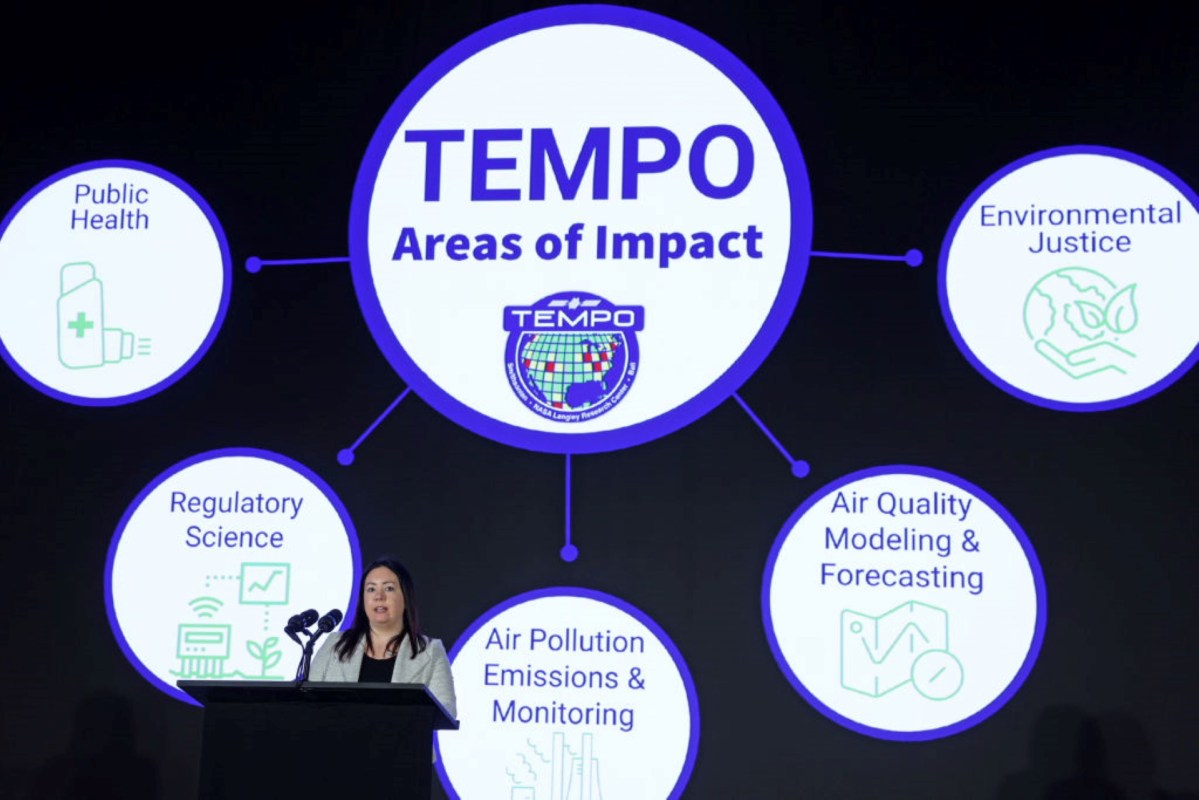Collaborative efforts from the Smithsonian Astrophysical Observatory and NASA produced the first images of air pollution in North America from its space-based probe TEMPO last August.
The instrument, which stands for Tropospheric Emissions: Monitoring of Pollution, tracked nitrogen dioxide density levels using a UV-visible spectrometer 22,000 miles above the continent and collected an image once every hour for six hours.
"Our first look at TEMPO's data shows that it is working superbly," Xiong Liu, the deputy principal investigator of the mission, a senior physicist from SAO and a member of Harvard and the Smithsonian's jointly run Center for Astrophysics (CfA), said in a news release. "We can now proudly say we're beginning a new era of air-quality monitoring over North America."
Though the initial visuals strictly tracked nitrogen dioxide, the researchers designed TEMPO to measure other atmospheric pollutants during the daytime, like ozone, aerosols, sulfur dioxide, and formaldehyde from sources like cars, oil refineries, and wildfires. It can also detect light pollution at night.
Previous satellites monitored Earth at much lower altitudes and could only collect data from a targeted area once a day. TEMPO can identify pollution levels for all of North America while narrowing its focus to a geographic area spanning four square miles — an improvement over the prior limitations of 100 square miles — allowing it to check fluctuations in air quality throughout the day for a region or even a neighborhood.
Therefore, "scientists using TEMPO can analyze how air pollution disproportionately impacts underserved communities and how these inequities can be resolved with informed policy," the news release read.
"If this summer's wildfires in Canada are any indication, it's clear that pollution emitted in one place can impact communities thousands of miles away, especially communities that are more susceptible to the negative effects of poor air quality," SAO and CfA astrophysicist Raid M. Suleiman said.
According to SAO and CfA physicist Caroline Nowlan, TEMPO could "revolutionize forecasts of air quality in North America," as the data it provides could warn people with preexisting respiratory diseases of going outside, or uncover the effects of rising temperatures on the health of local wildlife and vegetation.
Additionally, SAO and NASA plan to eventually send air-quality information collected by TEMPO to the EPA to provide the public with improved, up-to-date reports and forecasts.
"TEMPO will give us crucial data that we need to help us build a more sustainable planet for all living things," SAO and CfA director Lisa Kewley said. "We're thrilled to see the first data from this fundamentally important mission."
Join our free newsletter for weekly updates on the coolest innovations improving our lives and saving our planet.









